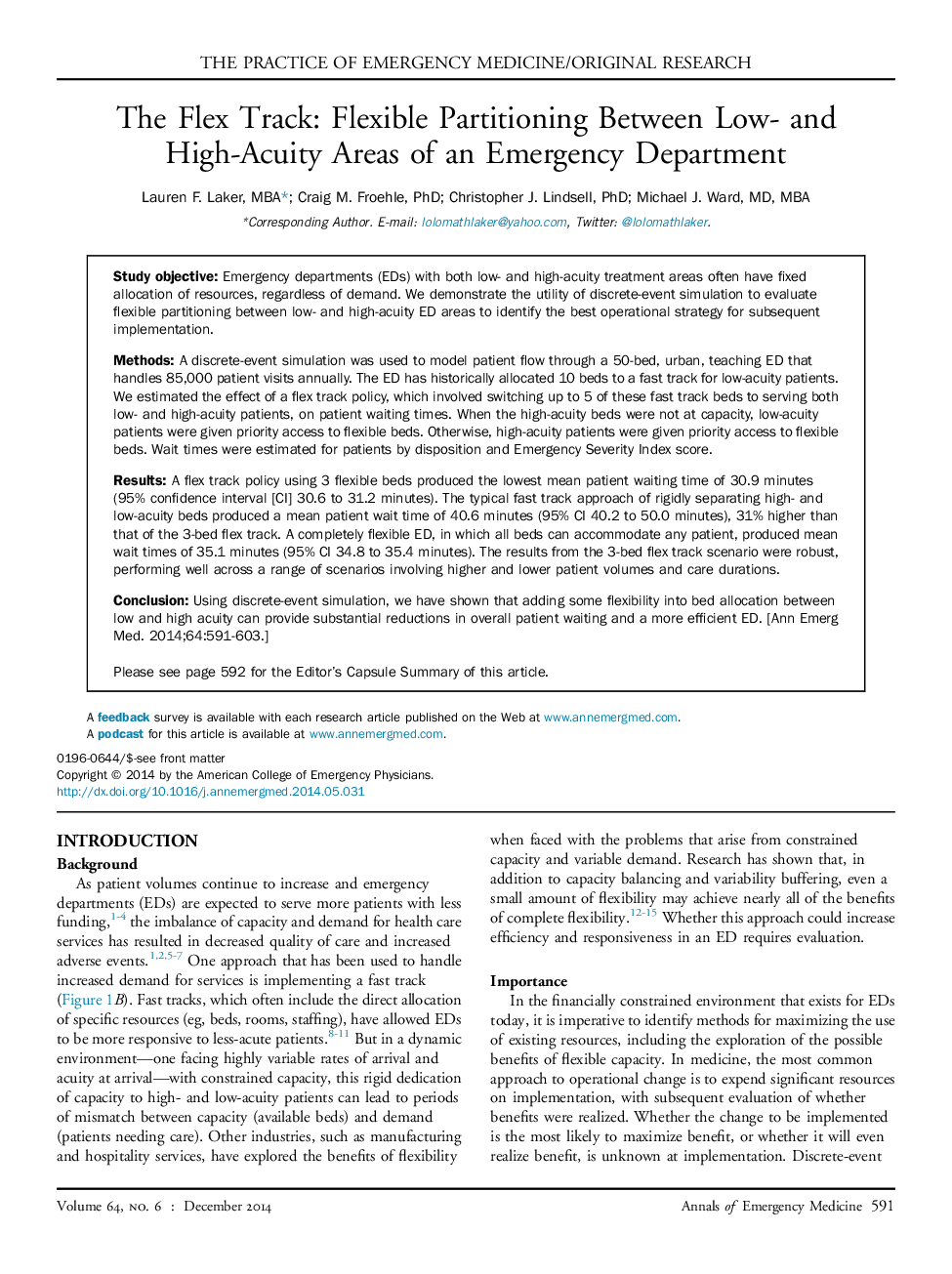| کد مقاله | کد نشریه | سال انتشار | مقاله انگلیسی | نسخه تمام متن |
|---|---|---|---|---|
| 6081209 | 1588525 | 2014 | 13 صفحه PDF | دانلود رایگان |

Study objectiveEmergency departments (EDs) with both low- and high-acuity treatment areas often have fixed allocation of resources, regardless of demand. We demonstrate the utility of discrete-event simulation to evaluate flexible partitioning between low- and high-acuity ED areas to identify the best operational strategy for subsequent implementation.MethodsA discrete-event simulation was used to model patient flow through a 50-bed, urban, teaching ED that handles 85,000 patient visits annually. The ED has historically allocated 10 beds to a fast track for low-acuity patients. We estimated the effect of a flex track policy, which involved switching up to 5 of these fast track beds to serving both low- and high-acuity patients, on patient waiting times. When the high-acuity beds were not at capacity, low-acuity patients were given priority access to flexible beds. Otherwise, high-acuity patients were given priority access to flexible beds. Wait times were estimated for patients by disposition and Emergency Severity Index score.ResultsA flex track policy using 3 flexible beds produced the lowest mean patient waiting time of 30.9 minutes (95%Â confidence interval [CI] 30.6 to 31.2 minutes). The typical fast track approach of rigidly separating high- and low-acuity beds produced a mean patient wait time of 40.6 minutes (95% CI 40.2 to 50.0 minutes), 31% higher than that of the 3-bed flex track. A completely flexible ED, in which all beds can accommodate any patient, produced mean wait times of 35.1 minutes (95% CI 34.8 to 35.4 minutes). The results from the 3-bed flex track scenario were robust, performing well across a range of scenarios involving higher and lower patient volumes and care durations.ConclusionUsing discrete-event simulation, we have shown that adding some flexibility into bed allocation between low and high acuity can provide substantial reductions in overall patient waiting and a more efficient ED.
Journal: Annals of Emergency Medicine - Volume 64, Issue 6, December 2014, Pages 591-603